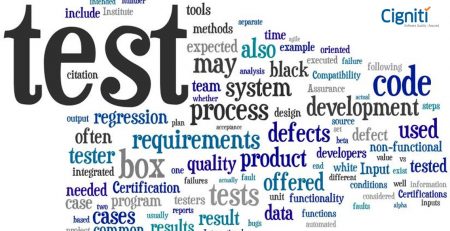Test Metrics And Measurement in Software Testing
Lord Kelvin said, “To measure is to know”. Measuring something is critical because “If you cannot measure it, you cannot improve it.” So, it is very apt for test measurement and metrics!
In common parlance, a metric refers to “a system or standard of measurement.” For example, a car’s mileage per liter of fuel compared to the mileage claimed by the manufacturer.
Regarding software, testing metrics (test measurement) is the “quantitative measure of the extent, capacity, dimension, amount or size of some attribute of a system, system component, or process.”
Simply put, metrics are quantitative measures used to estimate and verify the progress, quality, and health of a software testing effort. One example is the total number of defects present in an application.
According to Statista, revenue in the Software market is projected to reach US$698.80bn in 2024, with Enterprise Software dominating at US$292.00bn. The market is expected to grow at a CAGR of 5.27% from 2024 to 2028, reaching US$858.10bn by 2028. This underscores the vital role of test metrics and measurement in software testing to ensure quality and drive growth.
Software test measurement metrics analyze a software testing process in terms of performance, functionality, etc., and then use the data to improve its quality and efficiency.
The Need for Measuring Test Metrics
Measuring Test Metrics is a highly business-critical activity that helps us:
- Understand the specific type and amount of improvement required
- Make correct and proper decisions related to technology or process change
- Make well-informed decisions for the corrective actions to be taken
- Gather fool-proof evidence of the claims made
Things to Consider While Identifying the Metrics
While collecting and measuring metrics is essential, understanding and defining the correct testing metrics is even more critical. If not done correctly and with due diligence, collecting the wrong data will have a double negative impact—not only would you have collected data that is useless, but you would also have wasted a lot of time and effort on it.
Here’s a list of a few things that must be taken into consideration while specifying test metrics:
- Identify the target audience that needs the specific data – who are you collecting the data for?
- Define a well-established goal and purpose for the metric being collected – and share it with the entire team
- Explain all relevant and related metrics that are required for the project in question
- Spend time to understand the cost impact or benefits of spending efforts on the collection of each identified metric, and allocate the phase that will benefit the most
Types of Metrics
Metrics are usually of the following three types:
- Product-related metrics: These metrics relate to the quality of software products; identifying them and taking corrective actions helps improve the quality of the product.
- Process-related metrics: If identified and analyzed properly, these metrics help improve the efficiency of a process, such as SDLC.
- Project-related metrics: These metrics measure the efficiency with which a project is being run and the tools being used in it.
Different Stages of the Testing Metrics Life Cycle
The Testing Metrics Life cycle usually consists of 4 phases: Analysis, Communication, Evaluation, and Report generation. Following are the brief details of the specific activities that need to be performed in each phase:
Analysis
- Identify the specific metric that is to be measured. For example, the process related to project tracker.
- Remember the identified metric as the base, and clearly define the metrics as required. For example, the number of test scripts to be executed per day.
Communication
- Explain the need for metrics to stakeholders and the testing team: This will help the teams understand the importance of collecting details for the specific metric.
- Educate the testing team about the data points that need to be captured for processing the metric: Identify and explain the specific details that need to be tracked, determine the tracking frequency, and allocate the responsible resource. For example, at the end of each working day, the Manager of the Testing Team will generate a collated report of the 200 test scripts executed daily.
Report generation
- Develop the report with an effective conclusion: Identify the improvement areas based on the interpretation and analysis of the defined metrics. For example, if the number of test cases executed is less than the goal of 200, you need to conduct a proper investigation to understand the causes and then take corrective actions—whether to reduce the number of tests to be executed or rectify what caused the fall in numbers.
- Distribute reports to the stakeholders and take feedback.
Conclusion
At Cigniti, we cover all the bases and ensure that correct test data management metrics are collected to execute the proper test set. We provide the best quality for your product to make your customers happy. Our tool-agnostic test automation frameworks ensure accelerated testing, giving you higher productivity and a desirable time to market.





Leave a Reply